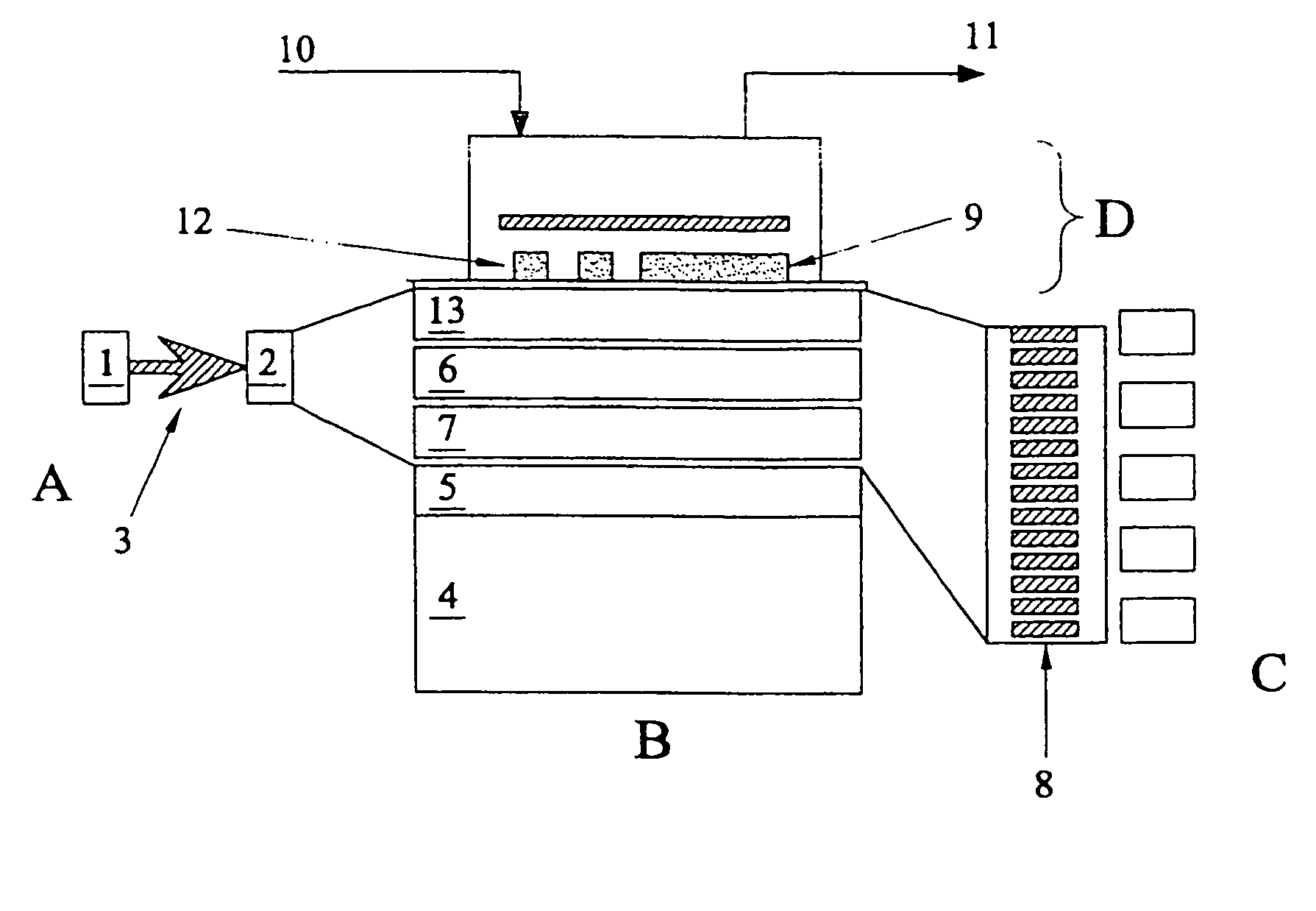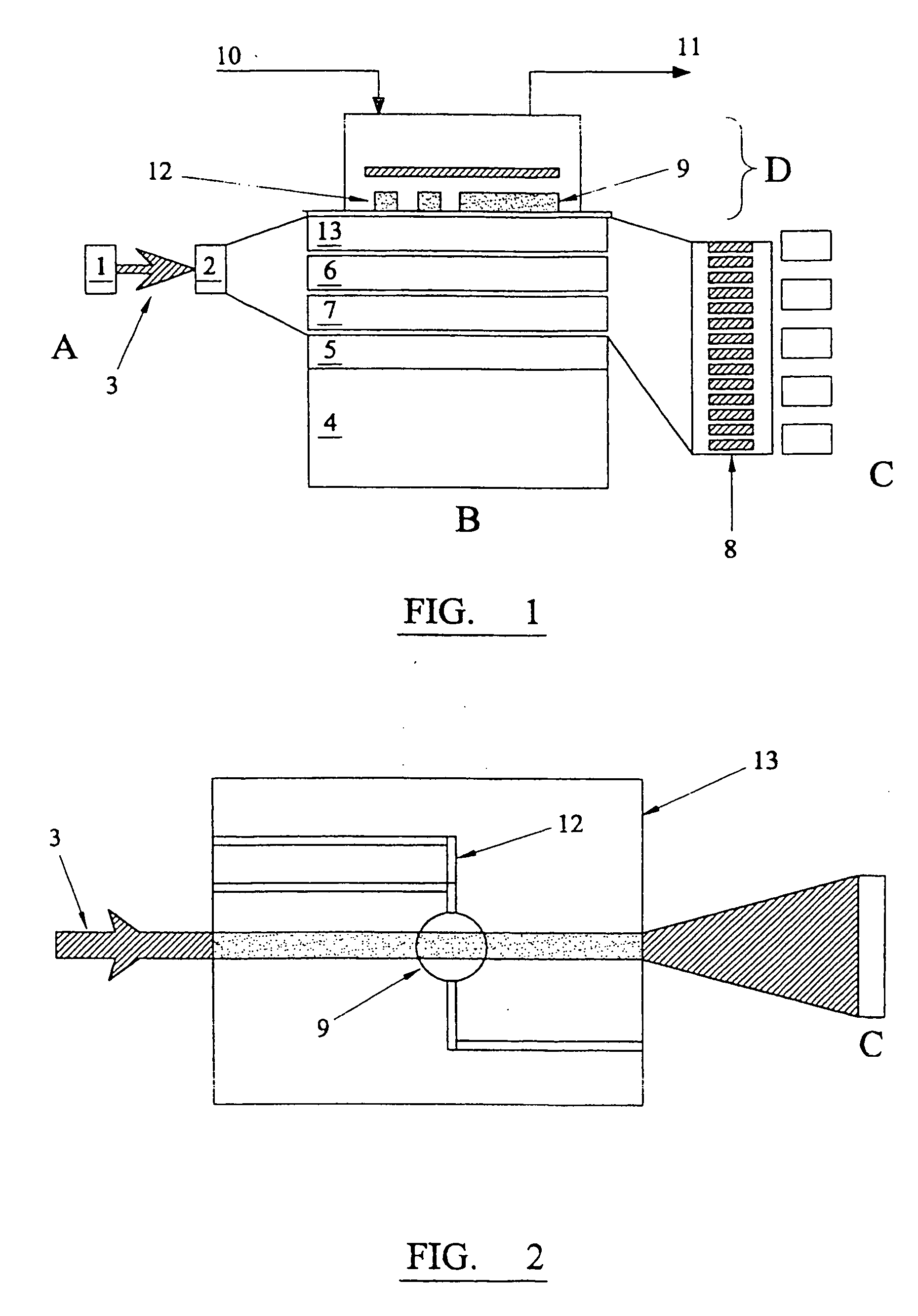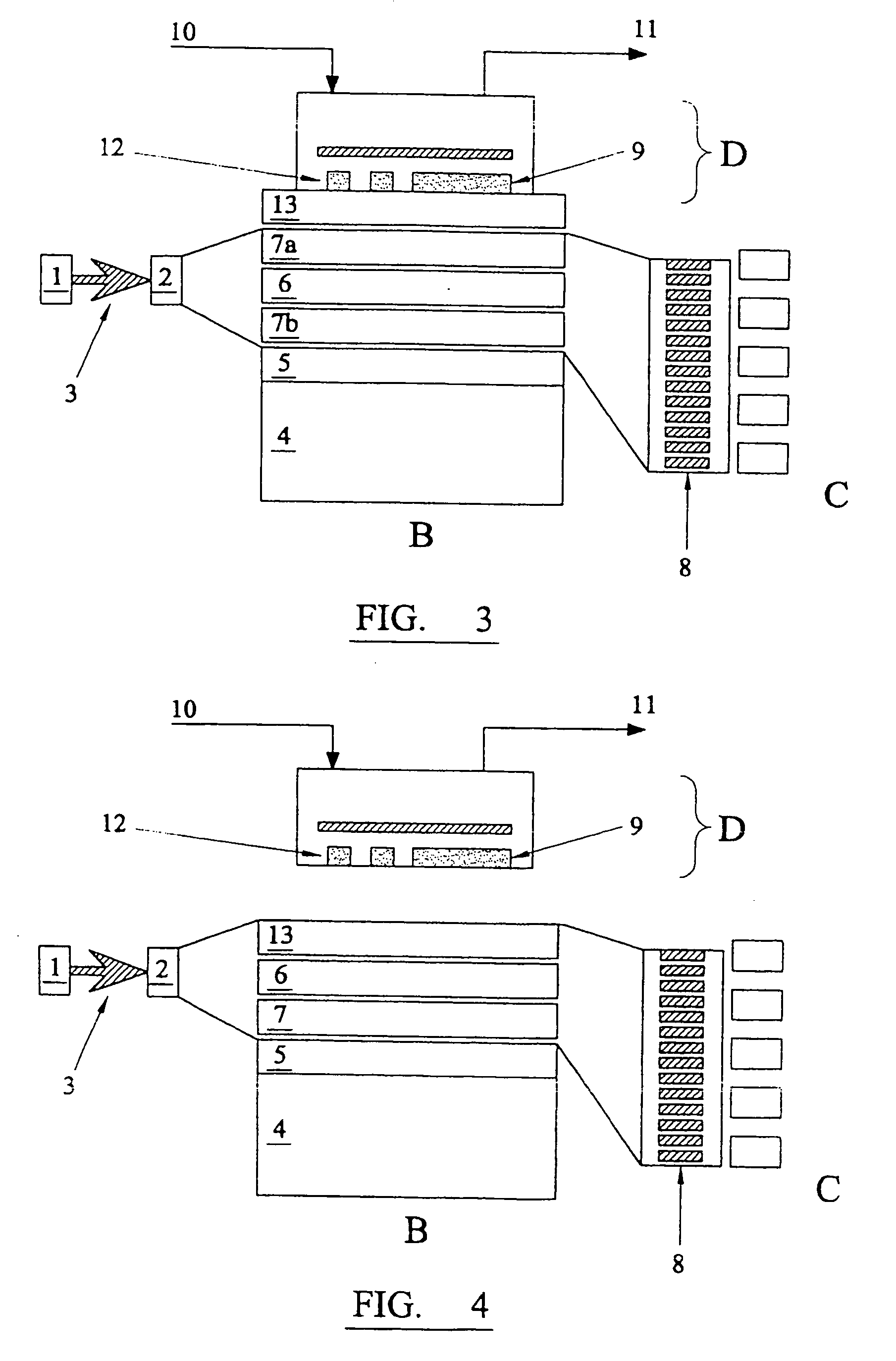Sensor device
a sensor device and sensor technology, applied in the direction of instruments, material analysis, and analysis by subjecting materials to chemical reactions, can solve the problems of limited interrogation of the sensing layer, the level of sensitivity and robustness of conventional sensor devices for the detection of chemical stimulus in analyte (e.g. a microanalyte) often fails to provide the level of sensitivity and robustness desired, and limitations are particularly apparent, so as to achieve enhanced signal-to-noise ratio ratio
- Summary
- Abstract
- Description
- Claims
- Application Information
AI Technical Summary
Benefits of technology
Problems solved by technology
Method used
Image
Examples
Embodiment Construction
[0074] An embodiment of the sensor device of the invention is shown schematically in FIG. 1 in whole waveguide mode. The sensor device comprises a sensor chip B with a microstructure D integrated onto its upper surface.
[0075] Plane polarised electromagnetic radiation 3 is generated by an electromagnetic source (not shown). The electromagnetic radiation 3 is focussed using a lens 1 (or similar micro-focussing object) and oriented as desired using a polariser 2. The electromagnetic radiation passes into and through the multi-layered structure of the sensor chip B which in this embodiment comprises a silicon layer 4, silicon dioxide layers 5 and 6, a silicon oxynitride layer 7 and an absorbent layer 13. The silicon oxynitride layer 7 acts as the reference waveguide and the absorbent layer 13 as the sensing waveguide.
[0076] The electromagnetic radiation is transmitted into the sensing waveguide 13 and the reference waveguide 7 simultaneously. The layered structure of the sensor chip B...
PUM
| Property | Measurement | Unit |
|---|---|---|
| thickness | aaaaa | aaaaa |
| microstructure | aaaaa | aaaaa |
| chemical stimulus | aaaaa | aaaaa |
Abstract
Description
Claims
Application Information
 Login to View More
Login to View More - R&D
- Intellectual Property
- Life Sciences
- Materials
- Tech Scout
- Unparalleled Data Quality
- Higher Quality Content
- 60% Fewer Hallucinations
Browse by: Latest US Patents, China's latest patents, Technical Efficacy Thesaurus, Application Domain, Technology Topic, Popular Technical Reports.
© 2025 PatSnap. All rights reserved.Legal|Privacy policy|Modern Slavery Act Transparency Statement|Sitemap|About US| Contact US: help@patsnap.com



